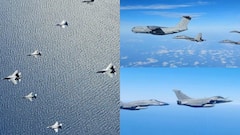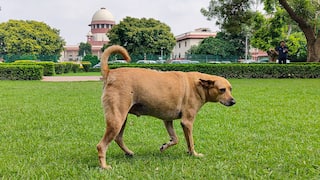Neighbourhood Watch: 5 More Years Of Xi Jinping Ahead. What CCP Meet Outcome Signals For India
During Xi Jinping's 9-year presidency, the Indian Army has withstood five major incursions on LAC by the Chinese PLA. As Xi gets 5 more years to rule, will things change?

The much awaited and widely discussed 20th Congress of the Chinese Communist Party (CCP) concluded on October 22, and the outcome was on expected lines. International community, including the Indian strategic elite, had kept a close watch on its deliberations and recommendations for the next five years and more. Though all the party documents, restructuring of party leadership under Xi Jinping, social and economic plans and proposals were prepared well in advance for the formality of approval of over 2,200 delegates from all over the country, strategic observers minutely observed the body language of the top leaders — especially when former president Hu Jintao was taken out of the meeting hall on the last day of the meeting — and the nuances of their utterances that are likely to have international ramifications.
That Xi will be rewarded with a third term of five more years as the president of the People’s Republic of China (PRC) and general secretary of the CCP, besides the chairman of the all-powerful Central Military Commission, was a foregone conclusion, considering the fact that the party constitution was already amended in 2018 to facilitate the extension of a president’s (read Xi's) tenure for an indefinite term. Xi had already violated the norm set by his own supreme leader Deng Xiaoping in the eighties. He broke all party traditions and rules, in place since 1992, and scrupulously followed by Jiang Zemin and Hu Jintao. It is widely believed that Xi will manage to occupy Zhongnanhai, the abode of the president and other top leaders, for life. Thus, the world, including India, will have to endure the rule breaker, ambitious, expansionist and authoritarian leader of China not only for next five years but for the rest of his life.
Xi has managed and neutralised all his opposition in the top echelons of the party in the name of fighting corruption and eliminating corrupt elements from the party, government and society. As a consequence, he has also earned the silent wrath of the party cadres and some of the top leaders. To further neutralise these elements, Xi would have to adopt more dictatorial and more aggressive nationalist stance for long-term survival of his regime.
What Lies Ahead For India As Xi Gets 5 More Years To Rule
Xi’s rise as the general secretary of CCP and the president of China in 2012-13 had proved to be very ominous for India. The policy of reconciliation with India through dialogue and maintaining peace on the borders was reversed by Xi. During his nine-year presidency, the Indian Army has withstood five major incursions on the Line of Actual Control by the Chinese PLA. The policy pursued by former Chinese presidents Jiang Zemin and Hu Jintao was discarded. The mutual confidence building agreements of 1993, 1996, 2005 and 2012 for maintenance of peace and tranquillity on the un-demarcated borders reached during the regime of Hu and Zemin were thrown to the winds and a new aggressive policy of deceit and confrontation was adopted. The agreements of confidence building measures were violated brazenly as the Indian Army guarding the 3,488-km-long the LAC had to take emergency counter measures amid escalated tensions between the two nuclear powers.
Though there was no direct mention of security situation on the LAC in the Eastern Ladakh region, in the almost two-hour long opening speech of President Xi or in any party document, the 20th CCP Congress appeared to be seeking to deliver a message to India by mentioning Galwan and talking about intensifying "troop training" and enhancing "combat preparedness". A short video clip of the fatal Galwan clash of 2020 was played on a huge screen in the Great Hall of the People just before Xi's inaugural speech. The intention to show the clip of the Galwan clash, which took place on June 15, 2020, between the soldiers of the two armies, was definitely to showcase the bravery of PLA soldiers and the "strong leadership" of President Xi. While India lost 20 of its brave soldiers in the clash, Xi has taken all measures to not reveal the actual casualty figures on the Chinese side. PLA regimental commander Qi Fabao, who was injured during the bloody clash, was honoured with a special invite to the CCP Congress along with other delegates. Projected as a hero who fought the Indian soldiers, Qi was among the 203 PLA delegates present at the Great Hall of the People.
China To Continue Work On Modernising Border, Coastal, Air Defence Systems
In the 63-page report presented by Xi, a special section is devoted to the military, which has raised eyebrows in the Indian strategic circles. This plan titled “Achieving the Central Goal of the PLA and further modernising National Defence and Military” does not directly mention India, but the plans outlined has special relevance for the Indian Army, especially the troops deployed in Eastern Ladakh since May 2020.
In his speech, Xi did not name any country when he referred to local wars and border issues, but said “achieving the goals for the centenary of the PLA in 2027 and more quickly elevating China’s armed forces to world class standards are strategic tasks for building a modern socialist country in all respects". Xi added: “...we will establish a strong system of strategic deterrence, increase the proportion of new domain forces with new combat capabilities, speed up the development of unmanned, intelligent combat capabilities, and promote coordinated development and application of the network information system.”
Outlining the need for improved command system for joint operations and enhance the capacity for reconnaissance and early warning, joint strikes, battlefield support and integrated logistics support, Xi said the PLA will intensify military training under combat conditions, laying emphasis on joint force-on-force training and high-tech training. Xi also stressed on improved national defence mobilisation capacity and development of reserve forces. He declared that China will continue to modernise border, coastal and air defence systems. These remarks by Xi assumes significance amid rising military manoeuvring, not only in the Indo-Pacific region but also on the icy heights of Eastern Ladakh where China has deployed over 60,000 of its soldiers.
The continuance of Xi definitely signals tougher days ahead for Indian soldiers on the 3,488-km LAC that informally divides the two Asian giants. Strategic observers also fear continued Chinese hostility against India on diplomatic fronts and in world fora like the UNSC, Nuclear Suppliers Group etc under the next five years of Xi regime.
The author is a strategic affairs analyst.
[Disclaimer: The opinions, beliefs, and views expressed by the various authors and forum participants on this website are personal.]
Related Video
India@2047 Summit: Modi Calls for Innovation, Reforms, and National Resolve






































